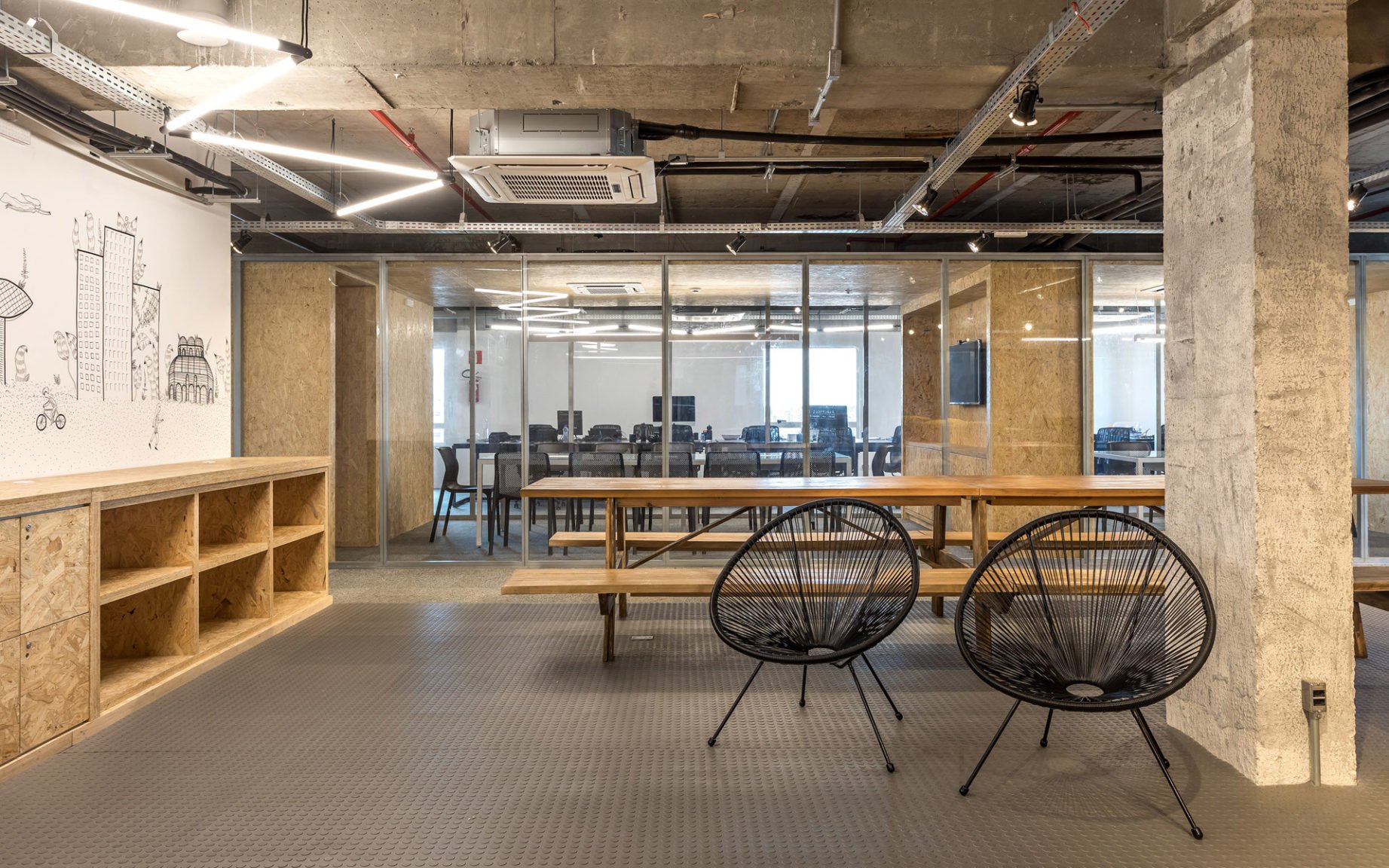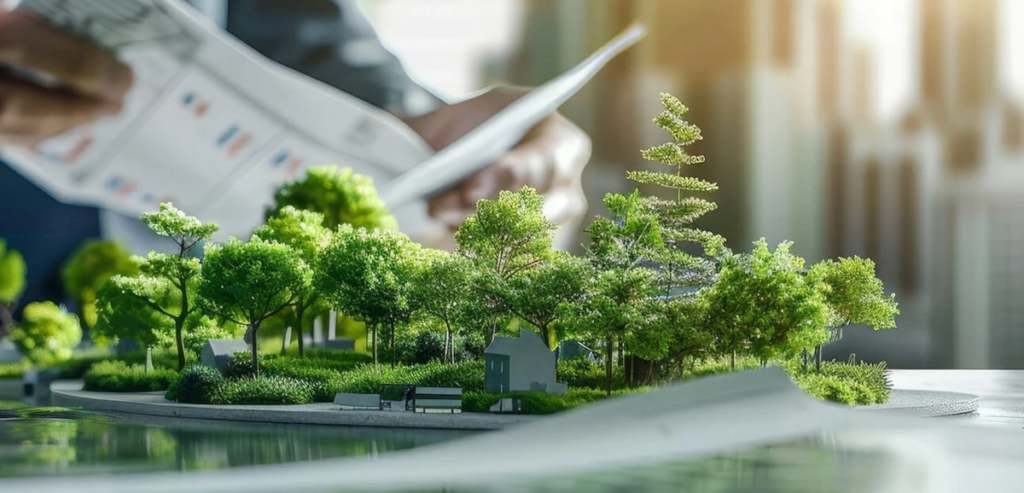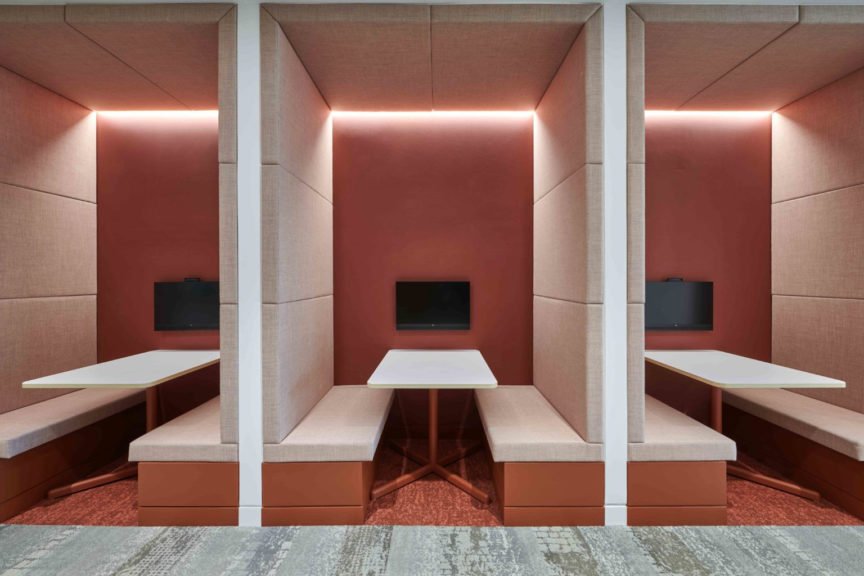Feature Image: Bcredi Office, Curitiba by Arquea Arquitetos; Photograph courtesy: Eduardo Macarios Photography
Energy enables growth and impacts both the economy and the environment. As people return to offices after the pandemic, offices have become a symbol of what we do and believe in. Love That Design tells you how to build a conscious future through an energy-efficient workspace.
Key Takeaways
- Calculating the carbon footprint of office spaces
- Three practical, research-backed tips for building an energy-efficient workspace with a lighting design balance
- Real-world examples of offices that are on the sustainable path for inspiration
What’s one of the greatest things you can do today for a better tomorrow, literally and figuratively? Optimise energy consumption at offices. We’ll tell you why. The UAE, for example, is the fifth-largest country in the world in terms of energy consumption per capita, with residential and commercial buildings consuming more than 40% of the energy. And the numbers are similar for all countries around the world.
Lighting represents 30 to 40% of the total energy consumption in office buildings. This significantly impacts the environment and incur substantial costs. So, how do we optimise energy consumption in office spaces, especially for lighting solutions, without compromising on the design perspective? Here goes..
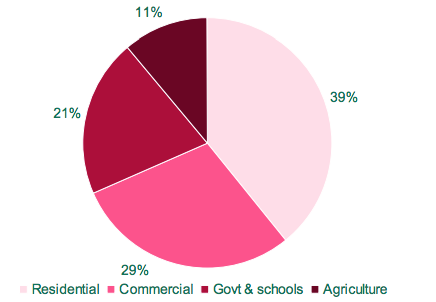
The Energy Quest
Designing a Zero Net Energy Building (ZNEB) brings sustainability into the mix. But its scope extends beyond that. Keeping costs low long-term helps a brand boost its reputation, do its bit for the blue planet, and command respect. About 33% of consumers prefer purchasing from a sustainable brand. From an organisation’s point of view, the first place to begin is to instil an energy-saving culture among its employees. That alone could reduce energy consumption by 30%. For designers, the key is in the nuances and an office’s lighting solutions.
Knowing where the maximum energy consumption is an effective starting point. For example, 36% of energy consumption in the UAE is used for cooling purposes. You can also use different carbon footprint calculators, like WWF’s Climate Calculator, to know an office’s direct and indirect carbon emissions. ‘Ideal’ carbon emissions would be 6,000 to 15,999 pounds annually. Aim for leading energy label certifications like LEED, BREEAM, DGNB or Energy Star, Effinergie, Minergie, and Passivhaus to enhance the value of a space.
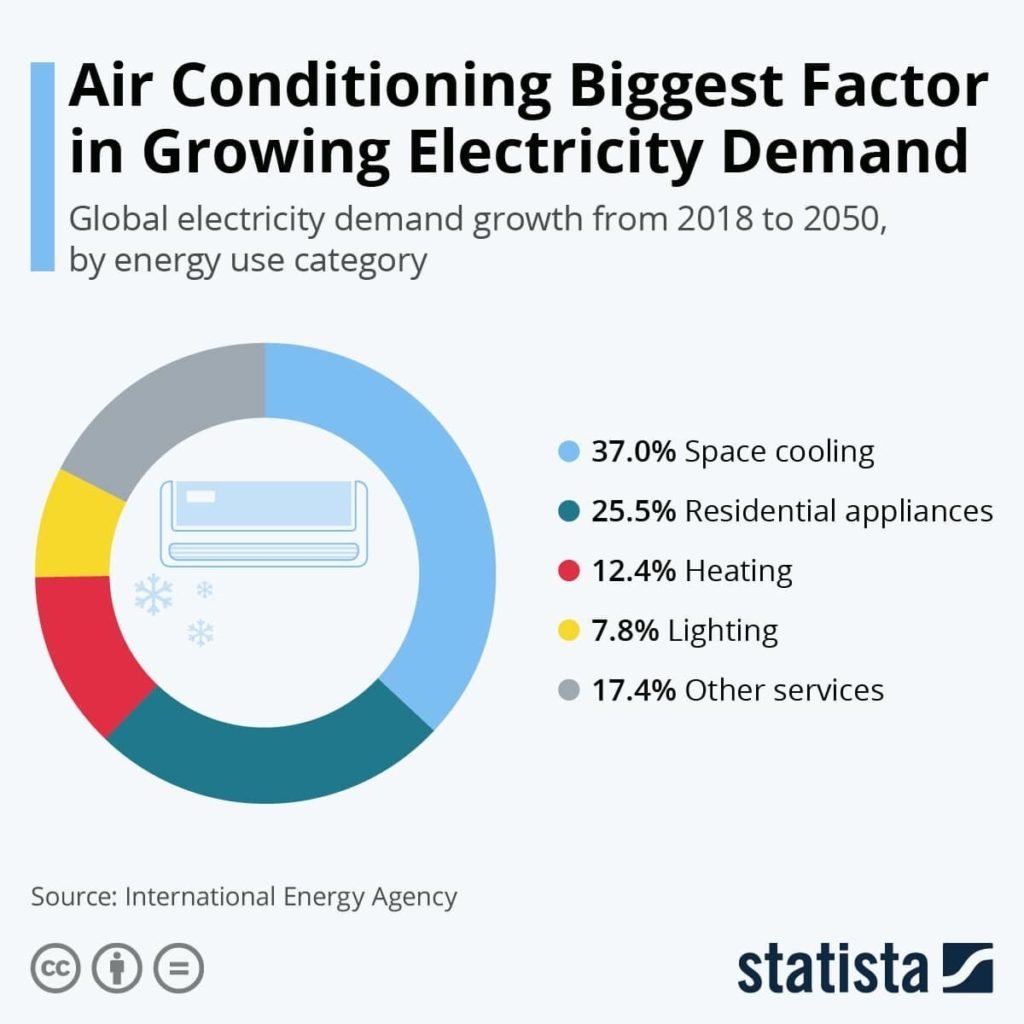
Source: The World Economic Forum
Cracking the Green Code: 3 Ways
1. Consider the use of light sensors and LED-led lighting design
Light occupancy sensors can save up to 37.9% energy when used in office spaces. Using information derived through motion/occupancy sensors, the turning off-turning on pattern of the lights can be automated depending upon the human presence in the room. These cutting-edge lighting control systems work on passive infrared (PIR) technology and sense a change in temperature by measuring the light reflected by objects in a room. These sensors can be concealed without disturbing the design concept.
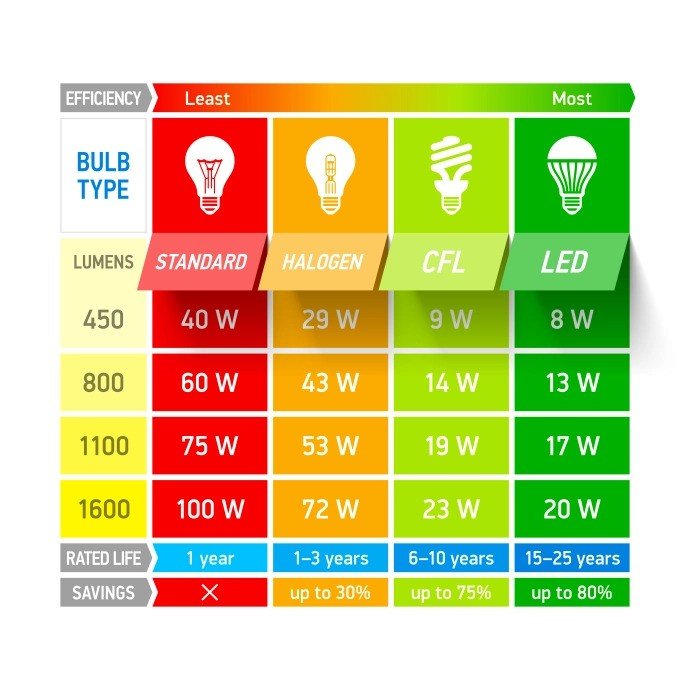
Image Courtesy: Marker Electric
2. Maximise daylight to create open, energy-efficient, airy and bright office spaces
A daylight-linked photosensor is a brilliant way to reduce energy consumption. Like a light sensor, it is a closed-loop, IoT-backed, control system that can offer 25% energy savings. It measures the level of illuminance present in a room through solar radiation and luminaires.
Alternatively, there is also an increased focus on smartly built windows, skylights, facades, reflective surfaces, etc., to reduce dependency on artificial lighting. This is called daylight harvesting. A preference for materials like aluminium can be used to fenestrate windows to augment daylighting. Glass partitions can also do wonders.
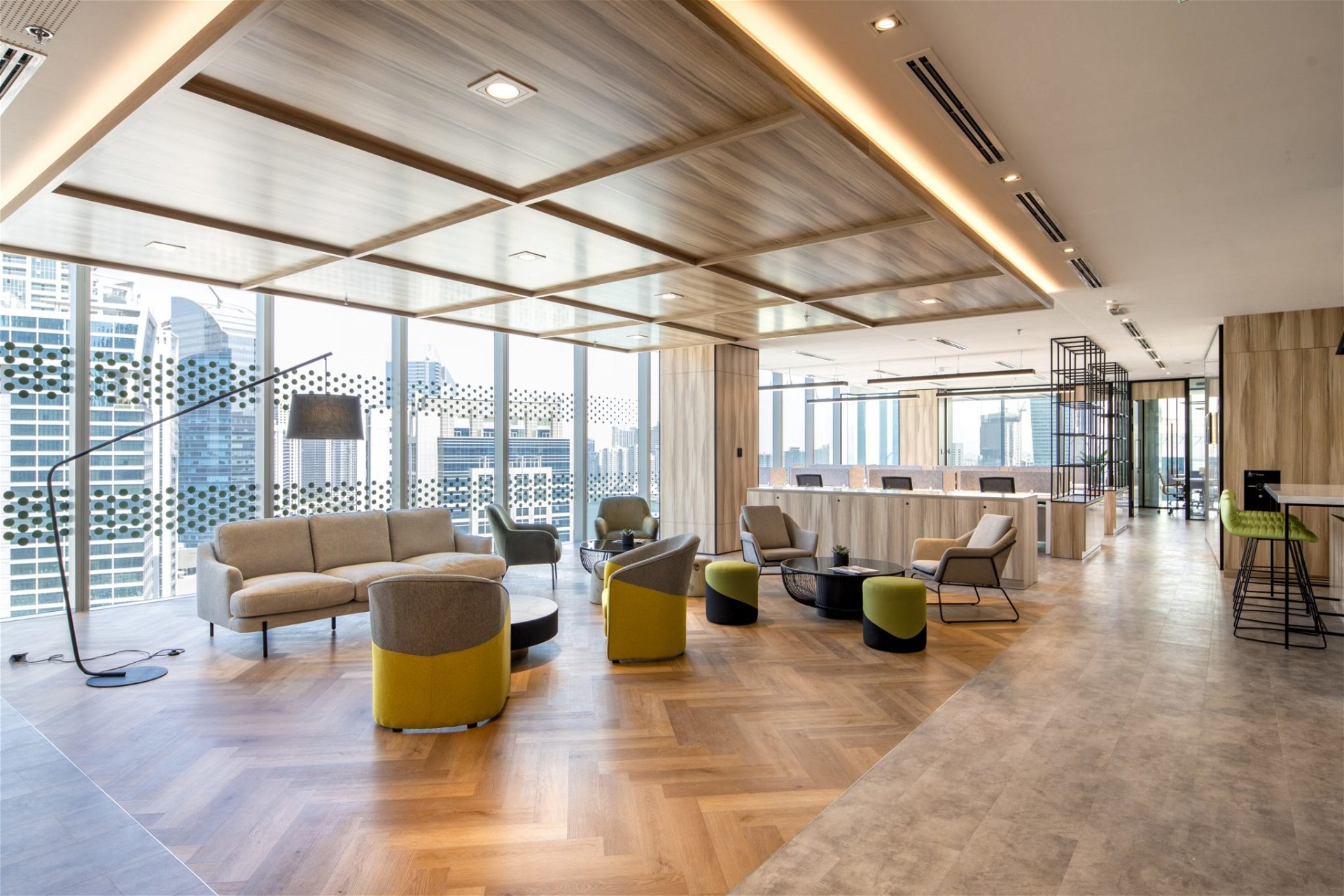
Frontier Education Office, Dubai by Horton Interiors; Photograph courtesy: Anique Ahmed Photography
3. Using focused lighting and reducing lighting power density
Focused lighting that illuminates a part of the space can help optimise energy consumption. Focused lighting or accent lighting, which are trends, can assist in adding depth and dimension to a space. Additionally, they emphasise a design element and create an awe-inspiring yet smart workspace that can turn heads.
You can also consider reducing lighting power density, which can optimise energy consumption and result in cost savings. Through impressive LED lighting solutions created by innovative brands, you can curtail energy usage by 90%. According to a study, the effect of reduced lighting power density on employee performance has been neutral to positive, which means it is a win-win.
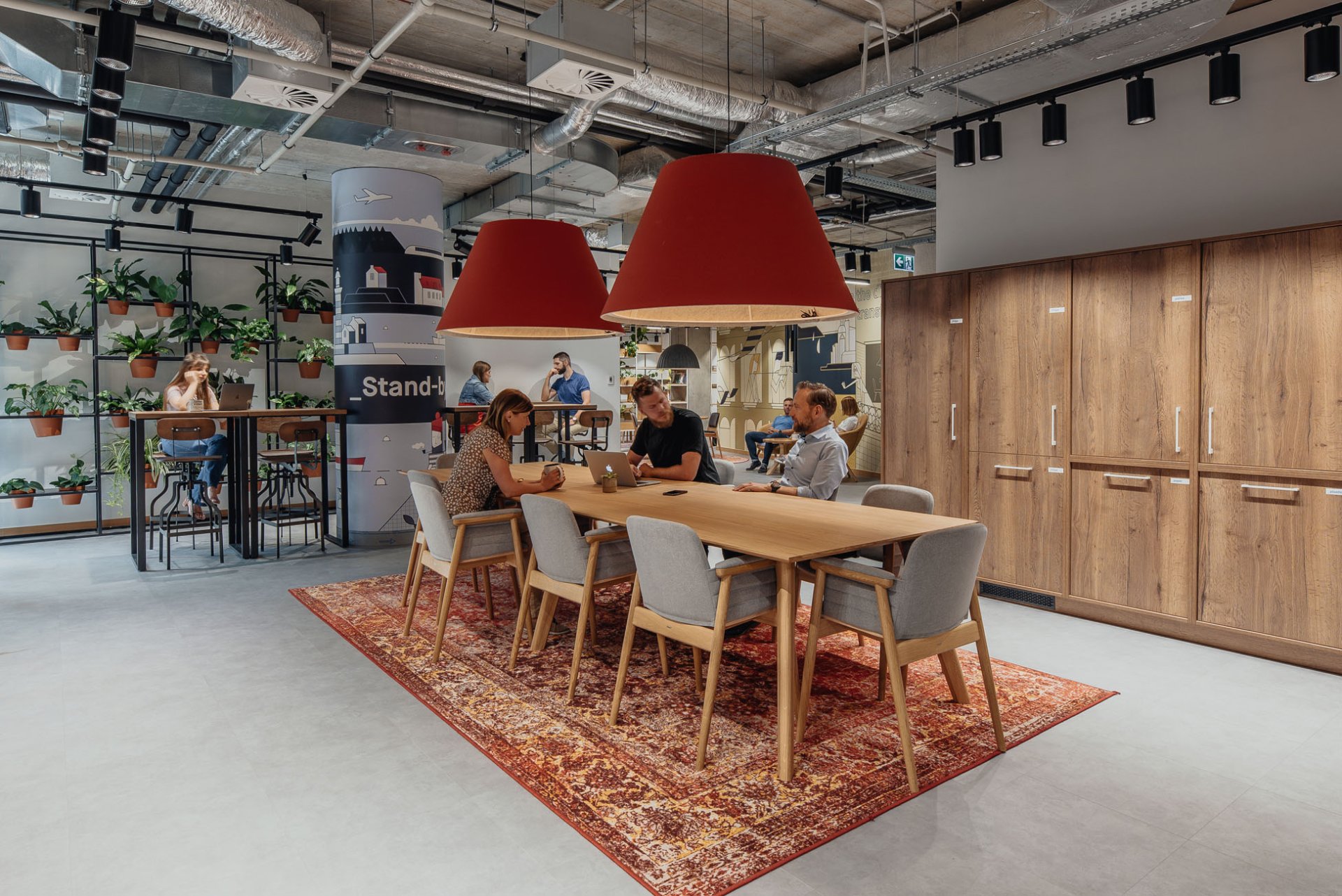
Leading Through Example
- Sainsbury in the UK and switched to 100% LED lighting for all of its supermarkets. Hermes Office, Leeds by Officeinsight, makes a smart use of LED and creates a focal point for its eclectic design theme.
- Smart Dubai Office, Dubai by dwp | Design Worldwide Partnership employed an energy-saving strategy by installing smart light sensors.
- Hubnordic Office, Copenhagen, by Danielsen Spaceplanning uses daylight harvesting to naturally illuminate the space.
Watt’s Next?
While a faster push towards affordable renewable energy is expected, LED will have the largest global energy-efficient lighting market share. The sub-segment will be worth more than USD 42,659.0 million by 2030. And 38% of this energy-efficient lighting market share will be held by commercial spaces. This shows that now is the time to transition and strike an equilibrium between energy efficiency and aesthetic design.
Article info
Article:
Date added:
26 March, 2024

